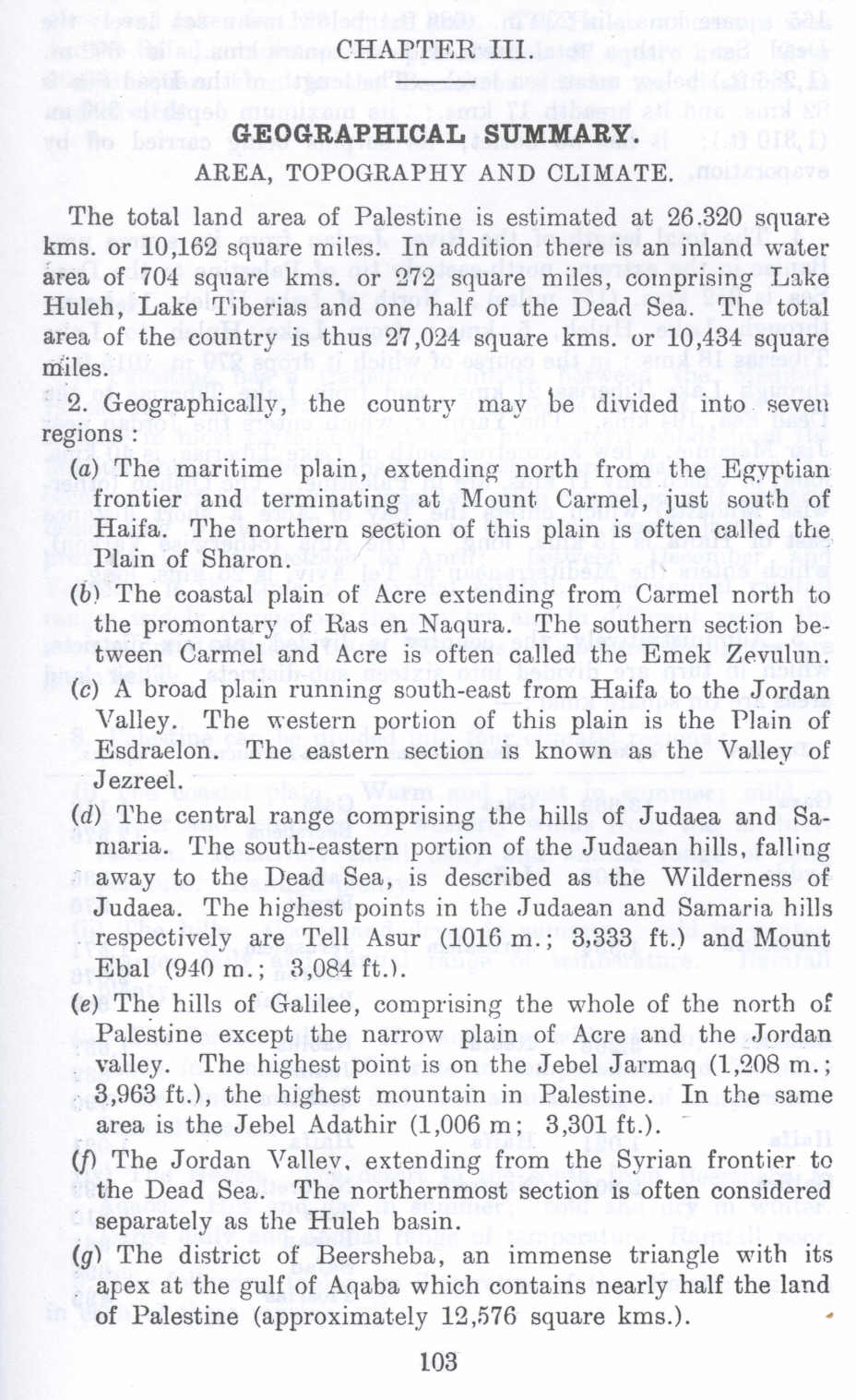| Prev | Next |  |
| Prev | Next |
| PalestineRemembered | About Us | Oral History | العربية | |
| Pictures | Zionist FAQs | Haavara | Maps | |
| Search |
| Camps |
| Districts |
| Acre |
| Baysan |
| Beersheba |
| Bethlehem |
| Gaza |
| Haifa |
| Hebron |
| Jaffa |
| Jericho |
| Jerusalem |
| Jinin |
| Nablus |
| Nazareth |
| Ramallah |
| al-Ramla |
| Safad |
| Tiberias |
| Tulkarm |
| Donate |
| Contact |
| Profile |
| Videos |
Geographic Summary of Palestine: Area, Topography and Climate, British Mandate: A Survey of Palestine: Volume I - Page 103. Chapter III. |
Disclaimer
The above documents, article, interviews, movies, podcasts, or stories reflects solely the research and opinions of its authors. PalestineRemembered.com makes its best effort to validate its contents.


Post Your Comment
*It should be NOTED that your email address won't be shared, and all communications between members will be routed via the website's mail server.
GEOGRAPHICAL SUMMARY.
AREA, TOPOGRAPHY AND CLIMATE.
The total land area of Palestine is estimated at 26 .320 square kms. or 10,162 square miles. In addition there is an inland water area of 704 square kms. or 272 square miles, comprising Lake Huleh, Lake Tiberias and one half of the Dead Sea. The total area of the country is thus 27 ,024 square kms. or 10,434 square miles.
2. Geographically, the country may be divided into seven regions:
(a) The maritime plain, extending north from the Egyptian frontier and terminating at Mount Carmel, just south of Haifa. The northern section of this plain is often called the Plain of Sharon.
(b) The coastal plain of Acre extending from Carmel north to the promontary of Ras en Naqura. The southern section between Carmel and Acre is often called the Emek Zevuluu ,
(c) A broad plain running south-east from Haifa to the Jordan Valley. The western portion of this plain is the Plain of Esdraelon. The eastern section is known as the Valley of Jezreel.
(d) The central range comprising the hills of Judaea and Samaria. The south-eastern portion of the Judaean hills, falling away to the Dead Sea, is described as the Wilderness of Judaea. The highest points in the .Iudaean and Samaria hills respectively are Tell Asur (1016 m.; 3,333 ft.) and Mount Ebal (940 m.; 3,084 ft.l.
(e) The hills of Galilee, comprising the whole of the north of Palestine except the narrow plain of Acre and the Jordan valley. The highest point is on the Jebel Jarmaq (1,208 m.; 3,963 ft.), the highest mountain in Palestine. In the same area is the Jehel Adathir (1,006 m; 3,301 ft.).
(f) The Jordan Valley , extending from the Syrian frontier to the Dead Sea. The northernmost section is often considered separately as the Huleh basin.
(g) The district of Beersheba, an immense triangle with its apex at the golf of Aqaba which contains nearly half the land of Palestine (approximately 12,576 square kms.).
Page 103